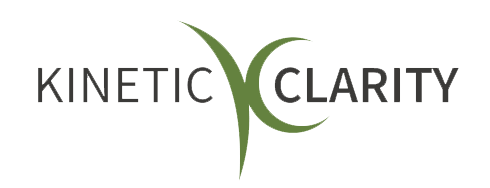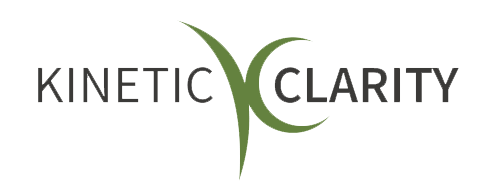Aligning Company Needs with Employee Expectations for a Perfect Balance
Are your expectations in balance with your employees?

It is a natural part of human nature to have expectations when you’re going into any situation, and your workplace is no different. You, of course, have some expectations for what you look for from your employees, and they likewise have some about what you will offer. It’s a two-way street, and it’s critical to find the right balance between the two sets of expectations. Without it, your company can suffer a bumpy road.
Some expectations may be unrealistic or misguided, so it’s essential to address these presumptions from the outset.
What Are Common Employee Expectations?
When you’re engaging with and evaluating your employees, you probably have the same set of requirements and expectations that most businesses have. You look for certain behaviors and practices that fit into your organization's culture, such as:
- A good attitude
- Responsibility, both personal and professional
- Consistent performance
- Showing up regularly and on time
- Professionalism
- Adherence to office protocol and policy
Those seem reasonable to expect from your employees, and most of them will understand that without explicit instruction. Still, it sometimes bears laying these requirements out in stark terms, so there’s no misunderstanding. After all, mindreading is a very rare talent these days.
So then, what do employees expect from you? Of course, expectations vary from person to person, even from group to group, but there are generally some similarities among most employees.
- Decent benefits and compensation
- Professional development opportunities
- Supportive work environment
- Diversity, Equity, and Inclusion
- Work-life balance
- Opportunity for advancement
- Support in what they need to succeed and carry out their tasks
- Clear communication
- Recognition for a job well done
Sometimes you may find an employee who has unreasonable or unrealistic expectations. Of course, some employers also fall into that category. Some expectations may be unexpected or unusual, but that doesn’t make them invalid. Those are the ones that may be worth exploring since they may bring unexpected benefits to your business.
Why Is It Important to Manage Employee Expectations?
When you successfully manage your employee expectations, you’re setting them and your business up for success. Keeping clear expectations encourages employees to stick around, which is so important in the current Great Resignation. 52% of millennials and Gen Z employees will probably seek new employers in 2022, according to Microsoft.
Having clear guidelines will ensure that employees don’t develop unrealistic views of what their job is and how the company operates. 48% of employees quit because the job or organization didn’t live up to their expectations.
With better transparency on what you expect from them and will provide in turn, employees are more likely to report job satisfaction. And higher satisfaction in their position leads to higher productivity.
When an employee is unsure of what’s expected from them, they will spend most of their time feeling stressed, wondering if they are doing the right thing, and often feeling like they are waiting to be told otherwise. A Gallup poll found that nearly 50% of employees are unsure of what their company expects from them. And when the organization doesn’t know what employees expect from it, you might end up overlooking an easy-to-solve problem.
Setting Expectations For Your Employees
You can implement some smart ways to make clear to your employees what you ask from them and what they will receive in return. Nobody should be uncertain or unclear about what the other side is thinking.
Let’s go over a few ways you can balance both sides' expectations that will benefit your business.
Communicate Policy With Context
People need to know why things are done the way they are. When your employees understand a policy or an approach to a topic, it will be easier to get them on board. It’s difficult to put your heart into doing something that feels arbitrary, and it’s hard to go along with a way of doing things when you don’t know the why’s. It doesn’t make sense and can cause confusion.
Connect your policies and way of doing things to the bigger picture. Make it clear to your employees how these expectations support the company and its goals. It helps people to see why something is ultimately beneficial.
Turning the tables, when it comes to what your employees expect from you, communicate back to them what they will see from you and why. Address anything that you know they expect, and be clear about why you cannot deliver on certain things. This way, it will be clear to them that they are not getting something they are looking for, but hopefully, they can understand and accept why.
Make it a Two-Way Conversation
Employees expect to have their voices heard, just as you expect them to hear you. They want to hear from you but also want to be able to provide you with their feedback. And you should want their feedback. With it, you can better take the pulse of what’s happening throughout the organization.
However, it must be clear that you are really listening to them. When there is an actionable suggestion, can you implement it? This shows them that the business is willing to invest in them and work toward meeting their expectations. And that’s a tremendous way to boost company morale.
Your workers are the boots on the ground within your business. They see the minutiae that leadership might miss. Getting their insights is priceless and ensures that you don’t overlook any glaring expectations they’ve had about the business.
Start Early and Often
Be upfront about basic expectations within your organization before you even begin the hiring process. Don’t waste your time or theirs by having them apply and interview only to discover there’s a major expectation that one side can’t live up to.
Continue expounding on your expectations throughout the entire training and onboarding process. Employees who receive in-depth training have an 11% higher performance rating (Gallup).
Repeat these points often so they don’t get lost along the way. Something worth saying once is worth saying again!
Leave no opportunity for confusion. It reaffirms what you’ll receive from your employees and confirms to them what they will get from you.
Creating That Ideal Yin And Yang
As much as companies would love to give their employees everything that would bring happiness to the office, they simply can’t. Sometimes it would hurt your company to give the employees some of the things they expect. But with open communication and compromises, you may come to a mutual understanding where everybody’s happy.
The challenges discussed above are addressed in our
culture coaching engagements. Kinetic Clarity has extensive experience in helping organizations proactively address areas of opportunity in navigating change and aligning values. Contact us to see how Kinetic Clarity can support your HR initiatives.
Top HR Risk Factors for 2022
Learning how top HR experts are protecting their Human Capital












